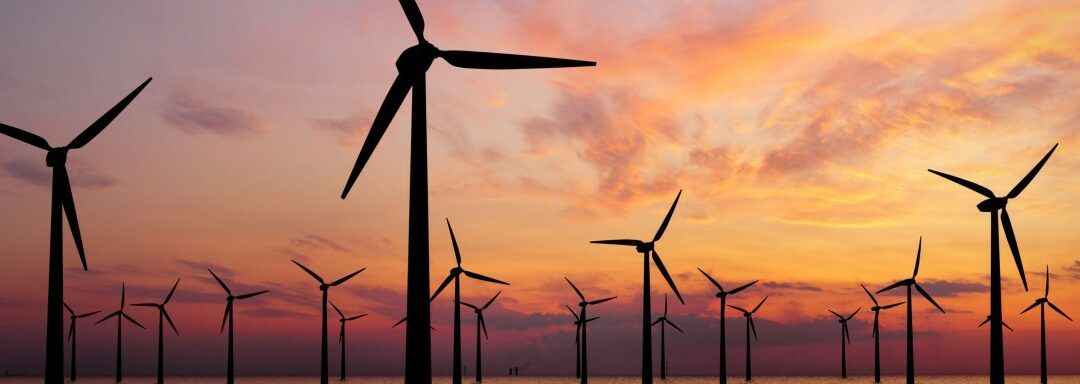Here at Empire Engineering we are celebrating ten years supporting the offshore wind industry. In this short article, Benoît Brière – Empire’s lead floating wind engineer – shares his reflections on the last decade.
Looking back on the last decade
The offshore wind industry is evolving – fast. For evidence we need only look back on what was happening in 2014:
- Back in 2014, Dong Energy announced it would be ready to sell its majority stake in the transport and installation contractor A2SEA, considering it no longer of strategic importance. Pressure on vessel supply chain was apparently a thing of the past!
- Back in 2014, Alstom Haliade wind turbine produced first power at the Belwind offshore site. With 6MW, it was the largest turbine ever produced, by a large 20% margin over the then-world record Areva Multibrid.
-
Back in 2014, construction activities were booming on Borkum Riffgrund 1 offshore wind site in Germany. With 312MW and an initial feed-in tariff of 194 €/MWh, this project was a good example of the industry standard in those days. Part of the farm was also used for de-risking innovative technologies, including the prototype of a suction bucket jacket.
- Back in 2014, the Dieppe-Le Tréport and Yeu-Noirmoutier sites were awarded to the newly formed Ocean Winds JV. With 1 GW in total, and first power produced announced for 2021, offshore wind was ready to take the big leap in France. The use of 8MW units to be produced by Areva was raising questions from some in the industry, considering such a model had yet to be prototyped.
- Back in 2014, engineering activities were buzzing on Statoil’s Hywind Scotland floating wind farm. Meanwhile, the technical team had identified a key challenge lying ahead for pre-commercial and commercial farms: heavy maintenance. Its impact on the overall regularity of the Hywind Scotland pilot park, and on all other commercial offshore wind farms, was flagged. And the need for smart (as well as cheap and safe) solutions for the replacement of large components was highlighted.
- Back in 2014, Steelwind Nordenham produced the so-called “Mega Monopile.” With a diameter of 7.80 meters, this steel giant was very much pushing the boundaries in terms of foundation fabrication.

Challenges in the last decade
Flash forward to today and it’s clear there have been significant challenges throughout the industry during the last decade of growth. All offshore wind projects have been delayed in France, for various reasons. And now that heavy maintenance in floating is happening before our eyes, we must accept that no groundbreaking solution was developed and derisked over the past decade to solve this tricky issue. Projects got cancelled. From Scotland to Poland, yards got closed due to lack of orders, only for us all to realise the existing supply chain would not be sufficient looking ahead.
As an industry, we also pushed some boundaries much further than the expectations we had ten years ago. Back then it was still not granted that offshore wind could become a competitive source of electricity production compared to fossil fuel alternatives. Offshore wind is now one of the cheapest source of electricity in several geographies. Did we even go a step too far, putting the supply chain viability at risk?
Turbine capacity has tripled before our eyes. Today, the same questions are raised regarding bankability of projects planning to use next-gen units. There are conversations around the feasibility of an increase from the 15MW to the 20+MW class of turbines, especially considering the bottleneck in installation vessels. What lessons can we learn from the last few years?
Reflecting on the past 10 years
Reflecting on these past 10 years is a humbling exercise, making it risky to try and predict what the offshore wind industry might look like in 2034.
What’s the water depth limit for monopiles? What’s going to be the depth limit for floating turbines? Are we going to see floating-specific turbines being developed, larger than bottom fixed models due to reduced constraints on T&I vessels? Can we halve the time between award and commissioning and deliver at pace?
We can speculate. But I won’t be placing any firm bets.
10 Years of Deep Thinking
We've been a part of some of the world's most exciting and
complicated projects in offshore wind.
If you need more eyes, brains and hands, we're ready to help.


